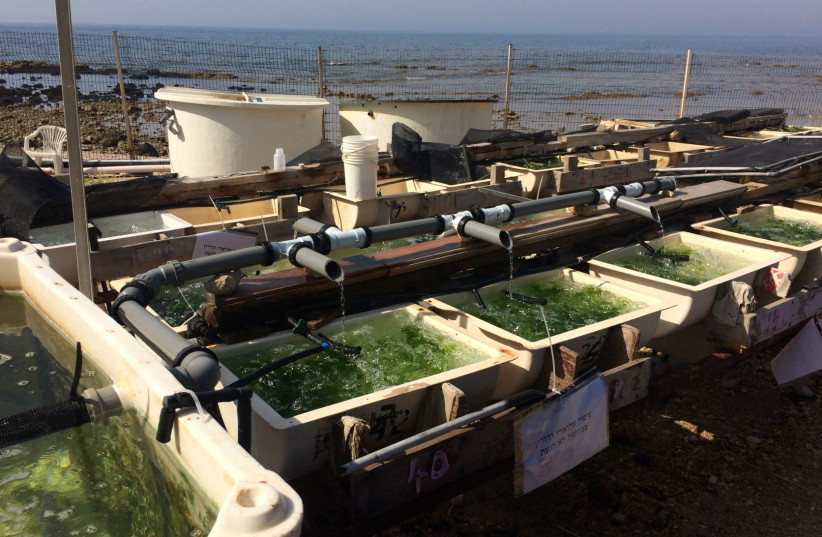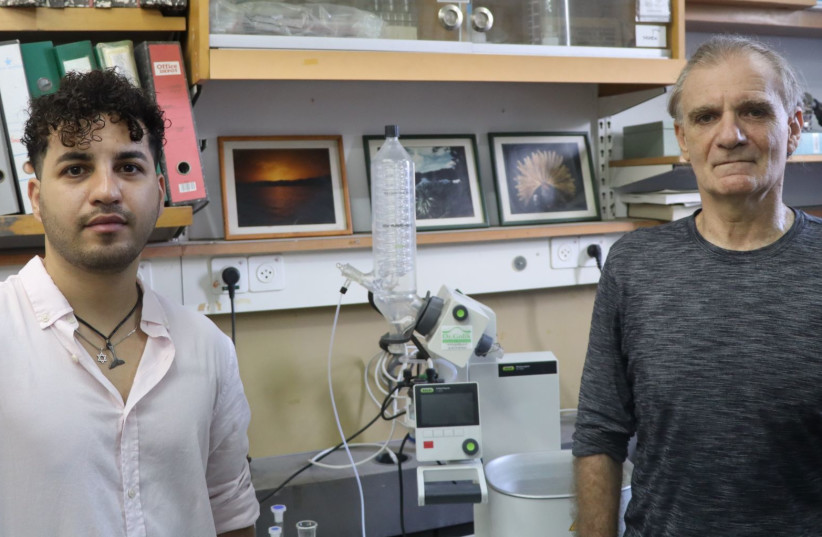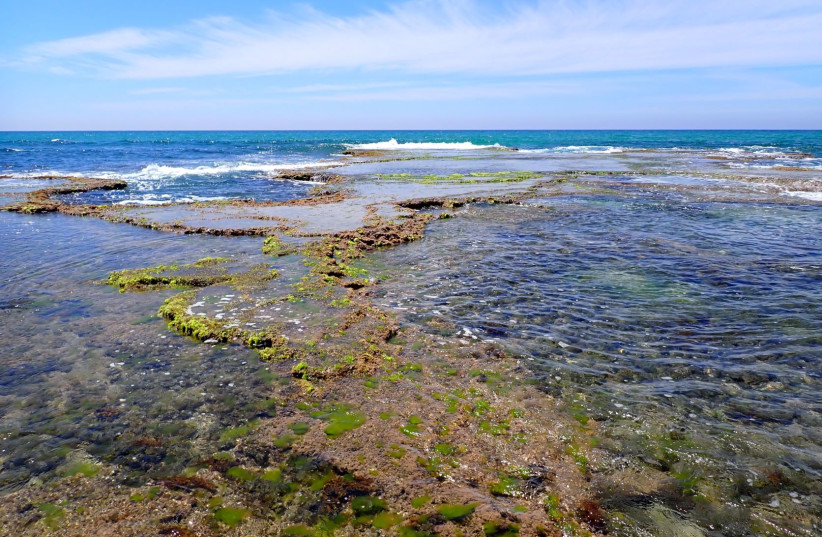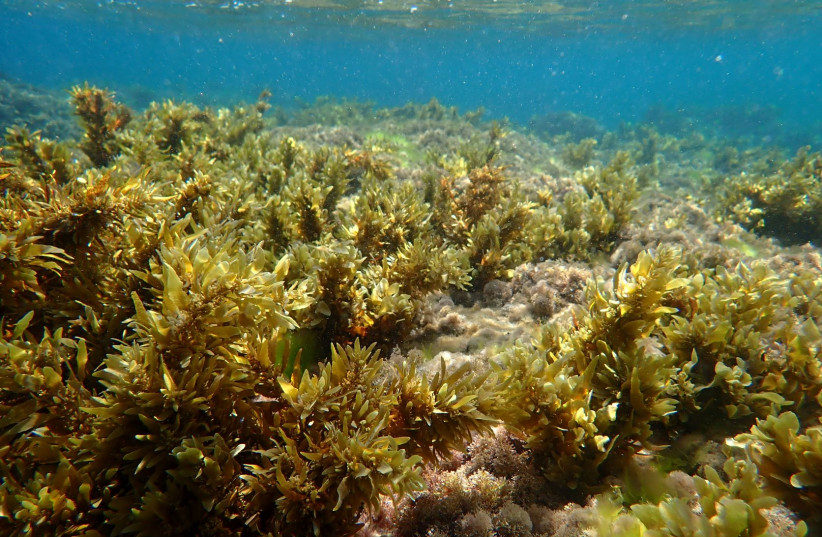‘Enriched seaweed’ with an extremely high nutritional value predicted by Israeli researchers is to become a superfood for mankind.
By JUDY SIEGEL-ITZKOVICH Published: SEPTEMBER 1, 2022

(photo credit: DORON ASHKENAZI)
Could enriched seaweed help relieve the global food crisis?
It might not sound very tasty, but researchers at Tel Aviv University and Haifa’s Israel Oceanographic and Limnological Research Institute (IOLR) have developed an innovative method for growing an unlimited amount of seaweed boosted with vitamins, minerals, healthful carbohydrates, proteins and dietary fiber for both human and animal needs.
The palatable seaweed, they predicted, has the potential to be a natural superfood and help secure food for the future of humanity.
The advanced technology promotes an environmentally friendly approach of “sustainable integrated aquaculture,” they said. As part of the methodology, the seaweed purifies the water in which it grows and thus helps maintain the ecological balance of the marine and coastal environment.
The research was led by doctoral student Doron Ashkenazi, under the guidance of Prof. Avigdor Abelson from Tel Aviv University’s School of Zoology and George Wise Faculty of Life Sciences, with Prof. Alvaro Israel of IOLR. The article was published under the title “Enrichment of nutritional compounds in seaweeds via abiotic stressors in integrated aquaculture” in the scientific journal Innovative Food Science & Emerging Technologies.
Left to right: Ph.D. student Doron Ashkenazi & Prof. Avigdor Abelson. (credit: TEL AVIV UNIVERSITY)
Ashkenazi explained that in the study, local species of the algae Ulva, Gracilaria and Hypnea were grown in close proximity to fish farming systems but under different environmental conditions. The special conditions enabled the seaweed to flourish and significantly improved their nutritional value to turn it into the seaweed superfood.
Can seaweed be used as a rich food source?
The use of seaweed as a rich food source that meets all human nutritional needs, the team noted. In that way, it is reminiscent of the biblical manna that fed the ancient Israelites in the desert. It will also be possible to use the enriched seaweed for other health industries, for example as nutritional supplements, as medicine and in the cosmetics industry.
“Seaweed can be regarded as a natural superfood, more abundant in the necessary components of the human diet than other food sources,” Ashkenazi added.
“Through the technological approach we developed, a farm owner or entrepreneur will be able to plan in advance a production line of seaweed rich in the substances in which they are interested, which can be used as health foods or nutritional supplements; for example, seaweed with a particularly high level of protein, seaweed rich in minerals such as iron, iodine, calcium, magnesium, and zinc, or in special pigments or anti-oxidants. The improved seaweed can be used to help populations suffering from malnutrition and nutritional deficiencies – for example disadvantaged populations around the world – as well as supplements to a vegetarian or vegan diet.”
“Seaweed can be regarded as a natural superfood, more abundant in the necessary components of the human diet than other food sources.”
Doron Ashkenazi
What is aquaculture and how does it work?
The innovative two-step aquaculture approach integrates seaweed and the diversion of fish effluents (wastewater) rich in nutrients into a series of cultivation tanks. Then, the seaweed is exposed to short-term “abiotic stressors” (the negative impact of non-living factors on living organisms in a specific environment such as drought, salinity, low or high temperatures and other environmental extremes) to stimulate the production of desired ingredients in the tissues.
The technique made possible high growth rates of up to 25% seaweed biomass per day, with significant and speedy enhancements in the amount of protein, starch and minerals.
Naturally growing intertidal seaweeds. (credit: DORON ASHKENAZI)
Unlike agriculture on land, aquaculture and the new proposed seaweed farming approach don’t require extensive land, fresh water or large amounts of fertilizer. According to the research team, it is environmentally friendly and preserves nature and the ecological balance by reducing environmental risks.
“The new methodology, they said, offers an ideal situation of sustainable and clean agriculture. Today, integrated aquaculture is beginning to receive support from governments around the world. Thanks to its environmental benefits, the reduction of nutrient loads to coastal waters and the [reduced] emission of gases and carbon footprints. In this way, it contributes to combating the climate crisis and global warming,” Ashkenazi said.
Underwater seaweed garden, Bat Yam. (credit: DORON ASHKENAZI)
“Technologies of this type are undoubtedly a model for a better future for humanity, a future in which humans live happily and peacefully and in good health in their environment.”
https://www.jpost.com/environment-and-climate-change/article-716044



